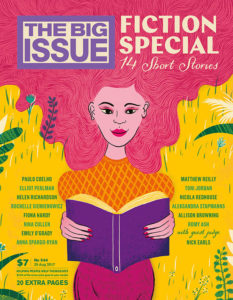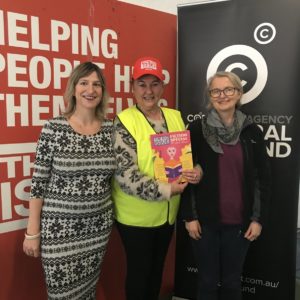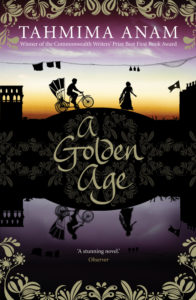 Richards Rossiter and Susan Midalia (eds)
Richards Rossiter and Susan Midalia (eds)
The Trouble With Flying is the third anthology published from winning entries to the Margaret River Short Story competition. As such, this handsomely-produced book, is an eclectic mix of stories from WA-based writers, and Australian writers, more broadly. There are many forms of trouble in this collection: the trouble with children, the trouble with parents and the elderly, the trouble with the bush and the city, the trouble with love, sex, sickness and death. Most of the writers here have found fresh angles on their chosen themes, while others take us off on strange and new paths. What they all have in common is accomplished writing that engages and interests.
The title story, Ruth Wyer’s ‘The Trouble With Flying’ features odd-girl-out TAFE student Rita trying to fit in with her new classmates and forming an uneasy relationship with punk-music mad Milo. The fine line of Rita’s life—to fit in or to forever be a loner—is somehow linked to the fate of two birds; a panicked pigeon stuck in a TAFE corridor and a seagull on a beach. This is a moving, tone-perfect story.
Linda Brucesmith’s ‘Bedtime Story’ is another beautifully-pitched story about two young sisters, supposedly asleep, listening to their parents’ dinner party downstairs. The opening line, ‘Don’t dream about ghosts’—the admonishment of Caitie to her sister Poppy—sets up the unsettled tone. Brucesmith pits the limited knowledge of the girls, against the reader’s suspicions, to create a tension and a mystery. What Poppy sees through the bedroom window at the end of the story, may or may not answer the initial statement.
The anthology places two bushfire stories side by side—the ambitious but flawed ‘Firestick Farmer’ by Peter Curry and the gentler, more subtle ‘Butcher’s Creek’ by Mark Smith. The average person pitted against the ferocious unpredictability of fire is a trope in Australian fiction but Smith adds an extra dimension to build tension in his story of a city-slicker couple trying to make it in the bush. They are warned off by a local who used to own their property, but, as is often the case, the well-meaning newbies cross an invisible boundary and are made to pay for an older, harsher reality, not of their making.
Claire Aman’s ‘Zone of Confidence’ belies any tropes; it’s a beautifully-written character study of obsession. The narrator is riding her boyfriend’s motorbike up the Queensland coast, following him as he sails a boat to Cairns for a client. In Aman’s deft hands, we accept the narrator’s actions as reasonable and feel her growing anxiety for the boyfriend’s safety:
The clouds are unpleasant with their grey bellies. I suspect them all. They’re questing for a tiny boat, your brave little sail under a puffy sky. I push them away from the coast. I’ve hurt my throat shouting warnings to you about storms boiling up in the west, and now I’m like a dog without a bark.
The bike ride becomes harder and harder with a resolution that, when we see it, we realise is strangely appropriate.
‘Red Saffron’ by Isabelle Li also stands out for taking on new ground. It is an unusual, elegantly written piece that canvasses an array of ideas from food, to religion, to poetry, to infidelity. It is Li’s achievement that she can make her unsympathetic narrator so compelling and interesting. The character’s wit, keen observation and unflinching self-possession seduces the reader, as it will no doubt also seduce her next intended conquest.
In Rosie Barter’s ‘Grasping for the Moon’ we are back in familiar territory— older woman’s infatuation with a younger man—but the muscular writing and engaging main character juggling Buddhist philosophy and her own desires, make this an enjoyable and taut story. Take this scene where Martha sneaks into the room of her new housemate and finds him asleep naked:
She must not look; but she does. One second, five, ten, she does not know; but when a sudden impulse charges his body, jerks his head towards the wall and he rolls over from her gaze, she jumps. Hand on her thrumming heart she backs out of the room …
Stories about death and dying are hard to pull off. They tend to be overly sentimental, too oblique or they use the inherent emotional reverberation of the subject matter as the only point of tension. Melanie Kinsman’s ‘A Paper Woman’ avoids the pitfalls; while it is the story of a young woman with cancer, it is also about someone falling in love, who thought she never would. The narrator’s pragmatism and clear-eyed observations encourages you to go along with her willingly on her tough journey:
The first time you saw me naked, I was afraid. I had not warned you of the scar. I quivered before you in the room, raw and unclad, afraid of disgust and shock in your eyes. I was a paper woman, thin and flammable. Your gaze was a match.
While you could feel exploited, you never do with this story; it is moving and ultimately uplifting.
The elderly narrator in Kathy George’s ‘Walking the Dog’ isn’t at death’s door, but he’s getting there and he knows it. Concerned with the small things of life, he keeps his head down, making sure things tick over for as long as they can. As with the birds in ‘The Trouble With Flying’ it’s an animal that reflects and elucidates the character:
There’s a guest in the bathroom. A moth. It has large dark wings like a dinghy with sails. Becalmed, it sits on the cistern lid and watches the dribble of my slow pee. When I flick the light switch it bangs and crashes around as if it is blind. It will damage its wings if it’s not careful.
George gives a cleverly nuanced portrayal of the relationship between the narrator and his adult daughter, worried about him but still at the stage where she has to give him room to live his own life. When he makes a joke and she laughs he thinks, ‘It’s nice to know I can still be funny’. Like the moth in the bathroom he knows that his time is limited.
There is a lot of talented writing in The Trouble With Flying, some exceptional. The editors have thought carefully about the placement of stories and this enhances the reading experience. The breadth of the stories on offer means that diverse readers will find something of interest in this anthology to engage and stimulate.
This review is also on Goodreads.
 This story was someone’s suggestion for a perfect short story. It was published in the New Yorker in 2002. It begins with a translator, Walter Such, at home in his lounge room with a guest, Susanna, having a drink. His wife, Marit, comes downstairs in a red evening dress ‘in which she had always been seductive, with her loose breasts and sleek, dark hair’. She asks for a drink too. It transpires that Marit is sick and, as the group talks in a desultory way, ominously the narrators tell us, ‘It was the night they had decided would be the one’.
This story was someone’s suggestion for a perfect short story. It was published in the New Yorker in 2002. It begins with a translator, Walter Such, at home in his lounge room with a guest, Susanna, having a drink. His wife, Marit, comes downstairs in a red evening dress ‘in which she had always been seductive, with her loose breasts and sleek, dark hair’. She asks for a drink too. It transpires that Marit is sick and, as the group talks in a desultory way, ominously the narrators tell us, ‘It was the night they had decided would be the one’.










